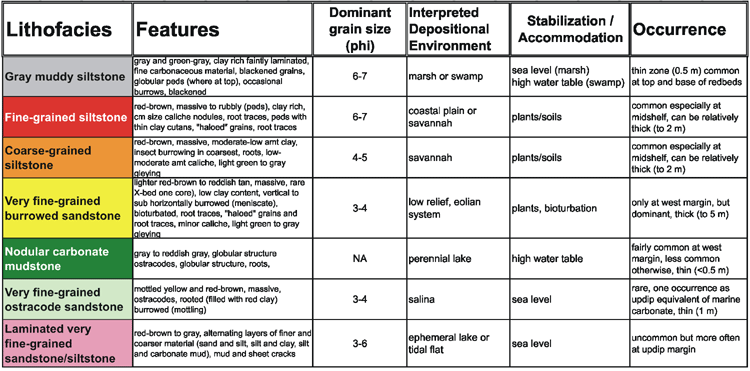Continental Lithofacies of the Council Grove
Detailed lithofacies classification for siliciclastics
Gray muddy siltstones, nodular carbonate mudstones, very fine-grained ostracode sandstone and laminated very fine-grained sandstone/siltstone combined make only a small portion of the overall volume of continental rocks, however they are important in that they reflect hydrologic conditions. Fine-grained and coarse-grained siltstones dominate cores from wells in the mid-shelf region whereas the fine-grained eolian sandstones dominate the west updip margin of the shelf.
(Color codes are keyed to lithofacies column and descriptions below)
Click on above image to show more detail (opens in new window)
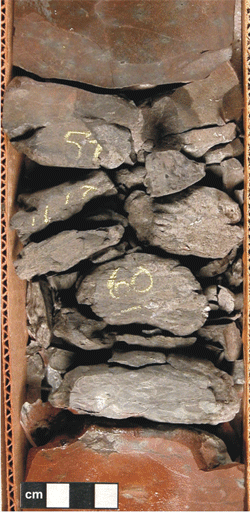 |
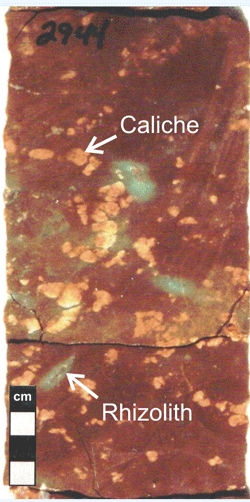 |
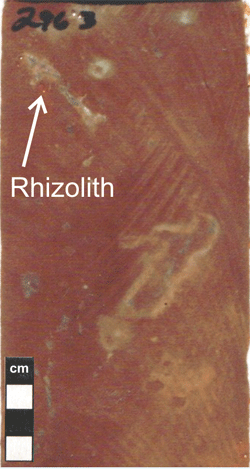 |
| Gray muddy siltstone (Cross H Cattle 2660') Faintly laminated muddy siltstone with abundant fine carbonaceous material sandwiched between coarse-grained siltstone (below) and very fine-grained sandstone (above). Environment: swamp related to climate change or locally high water table. |
Fine-grained siltstone (Newby 2944') Fine-grained siltstone (loessite) with abundant cm size caliche nodules, root traces, some with reduction haloes. Environment: Coastal plain; slow accumulation by airfall, stabilized by vegetation and soil processes. |
Coarse-grained siltstone (Newby 2963') Fine-grained siltstone (loessite), massive bedded, root traces filled with anhydrite, some roots with reduction haloes (photo enhanced to contrast features). Environment: Savannah; slow accumulation by airfall, stabilized by vegetation and soil processes. |
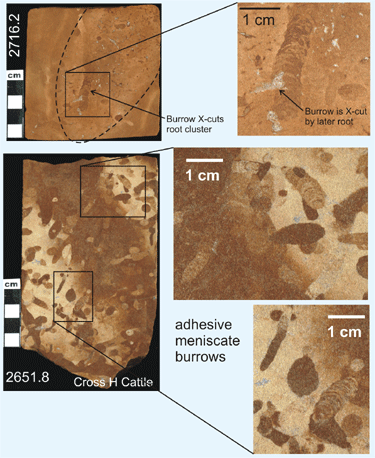 |
Burrows in very fine-grained sandstone
Observations:
Interpretation:
Continental; adhesive meniscate burrows (Hasiotis, personal communication) or possibly Taenidium (Buatois, personal communication); probably insect burrows. |
| Very fine-grained sandstone (Cross H Cattle 2716') Fine-grained sandstone (eolianite), massive bedded, large cylindrical fairway for fine root traces extends 0.5 meters vertically, adhesive mensicate burrows cross cut root traces and vice versa. Environment: low relief migrating eolian system with sands being stabilized by vegetation and, possibly, packing due to burrowing animals. |
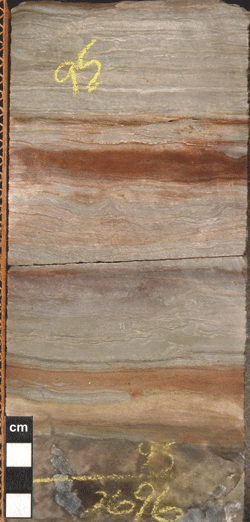 |
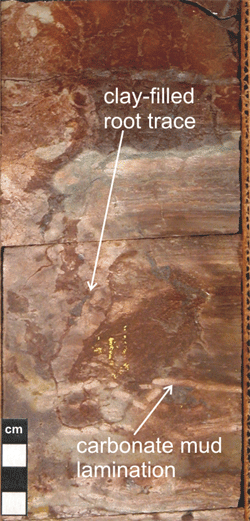 |
| Laminated fine-grained sandstone (Cross H Cattle 2695') Interbedded silt, very fine-grained sand and carbonate mud, crinkly laminated, minor soft sediment deformation, overlies muddy siltstones of a marsh environment. Environment: Tidal flat (supratidal), marginal to marine environment and associated with sea level. This interval may be the base of an interval that is the updip equivalent of the Middleburg (B2LM) marine carbonate that is absent in this well. |
Laminated siltstone (Cross H Cattle 2691') Interbedded coarse silt and carbonate mud laminae, some carbonate mudstone laminae have dessication cracks, root traces filled with red clay and silt disrupt the laminations. Environment: Ephemeral lake that may or may not be associated with sea level position. |
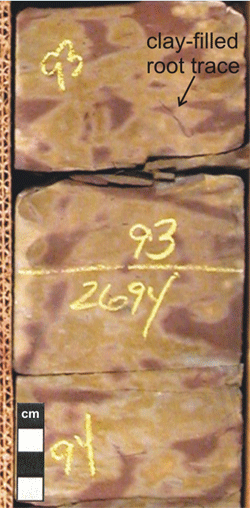 |
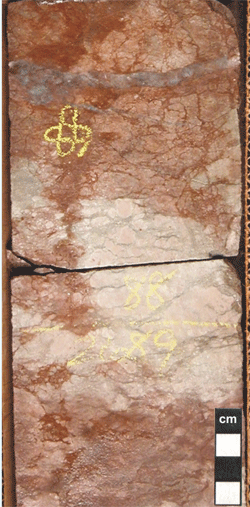 |
| Very fine-grained ostracode sandstone (Cross H Cattle 2694') Very fine-grained sandstone with sparse ostracodes throughout, burrow mottling evident by patchy coloration, fine root traces are filled with red clay. Environment: Salina marginal to marine environment and associated with sea level. This interval may be the updip equivalent of the Middleburg (B2LM) marine carbonate that is absent in this well. |
Nodular carbonate mudstone (Cross H Cattle 2689') Carbonate mudstone nodules with clay and silt drapes and seams, rare fine shell fragments, red clay filled root traces, overlain by clay-rich silt with carbonate mud lithoclasts and ped structures. Environment (for the carbonate mud): Lake due to ponded water associated with a perched water table. |
http://www.kgs.ku.edu/PRS/AAPG2005/2005-25/p2-01.html
Last Modified November 2005
